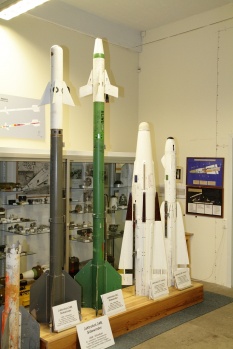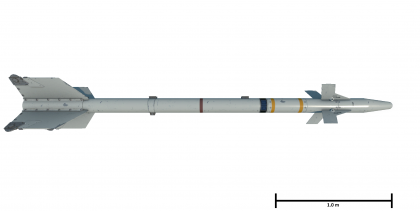Difference between revisions of "AIM-9P Sidewinder"
m (→Vehicles equipped with this weapon) |
Indo_Pilot (talk | contribs) (Added F-14A IRIAF (USA)) |
||
| (4 intermediate revisions by 4 users not shown) | |||
| Line 21: | Line 21: | ||
{{Navigation-First-Line|'''AIM-9P Sidewinder'''}} | {{Navigation-First-Line|'''AIM-9P Sidewinder'''}} | ||
{{Navigation-Line|A-5}}{{Specs-Link|a_5c}} | {{Navigation-Line|A-5}}{{Specs-Link|a_5c}} | ||
| − | {{Navigation-Line|T-2}}{{Specs-Link|t2}} | + | {{Navigation-Line|T-2}}{{Specs-Link|t2_early}}{{-}}{{Specs-Link|t2}} |
{{Navigation-Line|F-1}}{{Specs-Link|f1}} | {{Navigation-Line|F-1}}{{Specs-Link|f1}} | ||
{{Navigation-Line|F-4}}{{Specs-Link|f-4ej}}{{-}}{{Specs-Link|f-4ej_adtw}}{{-}}{{Specs-Link|f-4ej_kai}} | {{Navigation-Line|F-4}}{{Specs-Link|f-4ej}}{{-}}{{Specs-Link|f-4ej_adtw}}{{-}}{{Specs-Link|f-4ej_kai}} | ||
{{Navigation-Line|F-5}}{{Specs-Link|f-5a_china}}{{-}}{{Specs-Link|f-5e_aidc}} | {{Navigation-Line|F-5}}{{Specs-Link|f-5a_china}}{{-}}{{Specs-Link|f-5e_aidc}} | ||
| − | {{Navigation-Line|F- | + | {{Navigation-Line|F-14}}{{Specs-Link|f_14a_iriaf}} |
| + | {{Navigation-Line|F-16}}{{Specs-Link|f_16aj}}{{-}}{{Specs-Link|f_16a_block_20_mlu}}{{-}}{{Specs-Link|f_16a_block_10_iaf}}{{-}}{{Specs-Link|f_16d_block_40_barak_2}} | ||
{{Navigation-Line|F-104}}{{Specs-Link|f-104j}}{{-}}{{Specs-Link|f-104s_cb}} | {{Navigation-Line|F-104}}{{Specs-Link|f-104j}}{{-}}{{Specs-Link|f-104s_cb}} | ||
| Line 67: | Line 68: | ||
<!-- ''Give a comparative description of missiles that have firepower equal to this weapon.'' --> | <!-- ''Give a comparative description of missiles that have firepower equal to this weapon.'' --> | ||
The AIM-9P is an export version of the US AIM-9J sold to China mostly. The AIM-9P has the same performance as the AIM-9J used in the American tech tree. Except with the addition of radar slaving. | The AIM-9P is an export version of the US AIM-9J sold to China mostly. The AIM-9P has the same performance as the AIM-9J used in the American tech tree. Except with the addition of radar slaving. | ||
| + | |||
| + | {{AIM-9 Comparison Table}} | ||
== Usage in battles == | == Usage in battles == | ||
| Line 79: | Line 82: | ||
* 20G maximum overload | * 20G maximum overload | ||
* Simple point-lock-shoot user usage | * Simple point-lock-shoot user usage | ||
| + | * Good seeker FOV | ||
'''Cons:''' | '''Cons:''' | ||
| − | * | + | * Limited range |
== History == | == History == | ||
Latest revision as of 00:34, 28 October 2024
| This page is about the American air-to-air missile AIM-9P Sidewinder. For other versions, see AIM-9 Sidewinder (Family). |
Contents
Description
The AIM-9P Sidewinder is an American infrared homing air-to-air missile, it was introduced in Update "New Power".
As an export version of the AIM-9 Sidewinder, the AIM-9P delivers performance akin to that of the AIM-9J that allows for the AIM-9P to be used as a dogfighting missile against low-manoeuvring aircraft.
The AIM-9P-3 was designated as the RB24J in Swedish service, and as the Flz Lwf 63/80 in Swiss service.
Vehicles equipped with this weapon
| Vehicles equipped with this weapon | |
|---|---|
| AIM-9P Sidewinder | |
| A-5 | A-5C |
| T-2 | T-2 Early · T-2 |
| F-1 | F-1 |
| F-4 | F-4EJ Phantom II · F-4EJ ADTW · F-4EJ Kai Phantom II |
| F-5 | ␗F-5A · ␗F-5E |
| F-14 | ▄F-14A IRIAF |
| F-16 | F-16AJ · ␗F-16A MLU · Netz · F-16D Barak II |
| F-104 | F-104J · ▄F-104S TAF |
| RB24J | |
| SAAB 35 | J35D · Saab J35XS |
| SAAB 37 | JA37C · JA37D · AJ37 · AJS37 |
| Flz Lwf 63/80 | ◌Hunter F.58 |
General info
| Missile characteristics | |
|---|---|
| Mass | 76.93 kg |
| Guidance | IR |
| Aspect | Rear-aspect |
| Lock range (rear-aspect) | 5.5 km |
| Launch range | 18 km |
| Maximum speed | 2.5 M |
| Maximum overload | 20 G |
| Missile guidance time | 40 secs |
| Explosive mass | 7.62 kg TNTeq |
Effective damage
Describe the type of damage produced by this type of missile (high explosive, splash damage, etc)
Comparison with analogues
The AIM-9P is an export version of the US AIM-9J sold to China mostly. The AIM-9P has the same performance as the AIM-9J used in the American tech tree. Except with the addition of radar slaving.
- AIM-9B FGW.2 Sidewinder - A European-licensed version of the AIM-9B with their own improvements; however the performance in-game are quite similar.
- R-3S/PL-2 - Infamous as a reverse-engineered variant of the AIM-9B, the R-3 missile shares many of its in-game performances with the AIM-9B, only falling slightly short in locking and launching range.
- Shafrir - Shares in-game performance values despite their design differences
- Rb24 - Licensed-produced version of the AIM-9B for the Swedish, and as such shares in-game performance values.
| Missile | Guidance | Lock range (rear-aspect)(km) |
Launch range (km) |
Maximum speed (Mach) |
Maximum overload (g) |
Mass (kg) |
TNT Equivalent (kg) | |||||
|---|---|---|---|---|---|---|---|---|---|---|---|---|
| Type | Aspect | Time | Uncaged seeker | Radar slaving | ||||||||
| |
AIM-9B Sidewinder | IR | Rear | 20 | |
|
4 | 10 | 1.7 | 10 | 72 | 7.62 |
| |
AIM-9C Sidewinder | SARH | Front | 60 | |
|
9 | 18 | 2.5 | 18 | 95 | 4.69 |
| |
AIM-9D Sidewinder[note 1] | IR | Rear | 20 | |
|
5.5 | 18 | 2.5 | 18 | 88 | 4.69 |
| |
AIM-9E Sidewinder[note 2] | IR | Rear | 20 | |
|
5.5 | 18 | 2.8 | 10 | 76 | 7.62 |
| |
AIM-9G Sidewinder | IR | Rear | 60 | |
|
5.5 | 18 | 2.5 | 18 | 88 | 3.53 |
| |
AIM-9H Sidewinder | IR | Rear | 60 | |
|
5.5 | 18 | 2.5 | 18 | 88 | 3.53 |
| |
AIM-9J Sidewinder[note 3] | IR | Rear | 40 | |
|
5.5 | 18 | 2.5 | 20 | 76 | 7.62 |
| |
AIM-9L Sidewinder | IR | All | 60 | |
|
11 | 18 | 2.5 | 30 | 84 | 4.58 |
| |
AIM-9M Sidewinder | IR | All | 60 | |
|
11 | 18 | 2.5 | 30 | 84 | 4.58 |
| |
AIM-9P Sidewinder | IR | Rear | 40 | |
|
5.5 | 18 | 2.5 | 20 | 76.93 | 7.62 |
| |
AIM-9P4 Sidewinder | IR | All | 40 | |
|
11 | 18 | 2.5 | 20 | 76.93 | 7.62 |
| |
AIM-9B FGW.2 Sidewinder | IR | Rear | 20 | |
|
5.5 | 10 | 1.7 | 10 | 72 | 7.62 |
| |
Shafrir | IR | Rear | 20 | |
|
7 | 10 | 1.7 | 11 | 65 | 7.62 |
| |
RB24 | IR | Rear | 20 | |
|
4 | 10 | 1.7 | 10 | 72 | 7.62 |
| |
R-3S | IR | Rear | 21 | |
|
9 | 10 | 1.7 | 10 | 75 | 8.8 |
| |
PL-2 | IR | Rear | 21 | |
|
9 | 10 | 1.7 | 10 | 75 | 8.8 |
Usage in battles
The AIM-9P Sidewinder can be used in battle as an air-to-air missile. You would have to fire the missile while locked on from behind because it is a "Rear Aspect" missile.
Pros and cons
Pros:
- 20G maximum overload
- Simple point-lock-shoot user usage
- Good seeker FOV
Cons:
- Limited range
History
When the AIM-9L Sidewinder began to be put into production in 1976 to replace other Sidewinder variants as the United States' main IR missile,[1] a need was created for Sidewinders to offer to the United States' allies that did not need or were not allowed access to the newest AIM-9 Sidewinder variants and their associated features such as all-aspect locking.[2]
The AIM-9P Sidewinder missile was developed as a family of export missiles. Sponsored by the US Air Force, this variant was based off the AIM-9J/N variants, though would be updated multiple times incorporating new features and improvements.[2][3]

- Variants of the AIM-9P
- AIM-9P - The first version, which is an improved AIM-9J model with greater engagement ranges. It also incorporates solid-state technology for better reliability and maintainability. Deliveries of this missile started in 1978.[4]
- AIM-9P-1 - Introduces an active optical target detector with the DSU-15/B AOTD laser proximity fuze, replacing the old infrared influence fuze.[2][4]
- AIM-9P-2 - Introduces a reduced-smoke rocket motor.[2][4]
- AIM-9P-3 - Alongside the reduced-smoke rocket motor like the preceding P-2, the P-3 also includes a new insensitive munitions warhead and improved guidance and control section. Fuzing appears to be a mix of the original infrared fuze or the active optical target detector as the P-1.[2][4] The AIM-9P-3 is also the basis of the Swedish RB24J missile.[5]
- AIM-9P-4 - Introduces ALASCA features and technology of the AIM-9L variants.[2] However, it is considered less agile to the AIM-9L variant.[3]
- AIM-9P-5 - Introduces IRCCM incorporated in the AIM-9M variant.[2] This model is also the basis of the Swedish RB74, or RB24L, missile.[5]
More than 21,000 AIM-9P models were built during its production, though many were rebuilt AIM-9B/E/J. Despite being slated for export use, most of the missiles are in US Air Force inventory.[2]
Media
Excellent additions to the article would be video guides, screenshots from the game, and photos.
See also
- Related development
External links
References
- Citations
- Bibliography
- GlobalSecurity.org "AIM-9 Sidewinder." GlobalSecurity.org, Website. Accessed 02 Apr 2021 (Archive).
- Goebel, Greg. "The Falcon & Sidewinder Air-To-Air Missiles." Air Vectors, 01 Mar. 2021, Website. Accessed 02 Apr 2021 (Archive).
- Kopp, Carlo. "The Sidewinder Story: The Evolution of the AIM-9 Missile." Air Power Australia, 27 Jan 2014, Website. Accessed 02 Apr 2021 (Archive).
- Parsch, Andreas. "AIM-9." Directory of U.S. Military Rockets and Missiles, Designation-Systems.Net, 09 July 2008, Website. Accessed 02 Apr 2021 (Archive).
- Westrum, Ron. Sidewinder; Creative Missile Development at China Lake. Naval Institute Press, 30 Sep. 2013.




